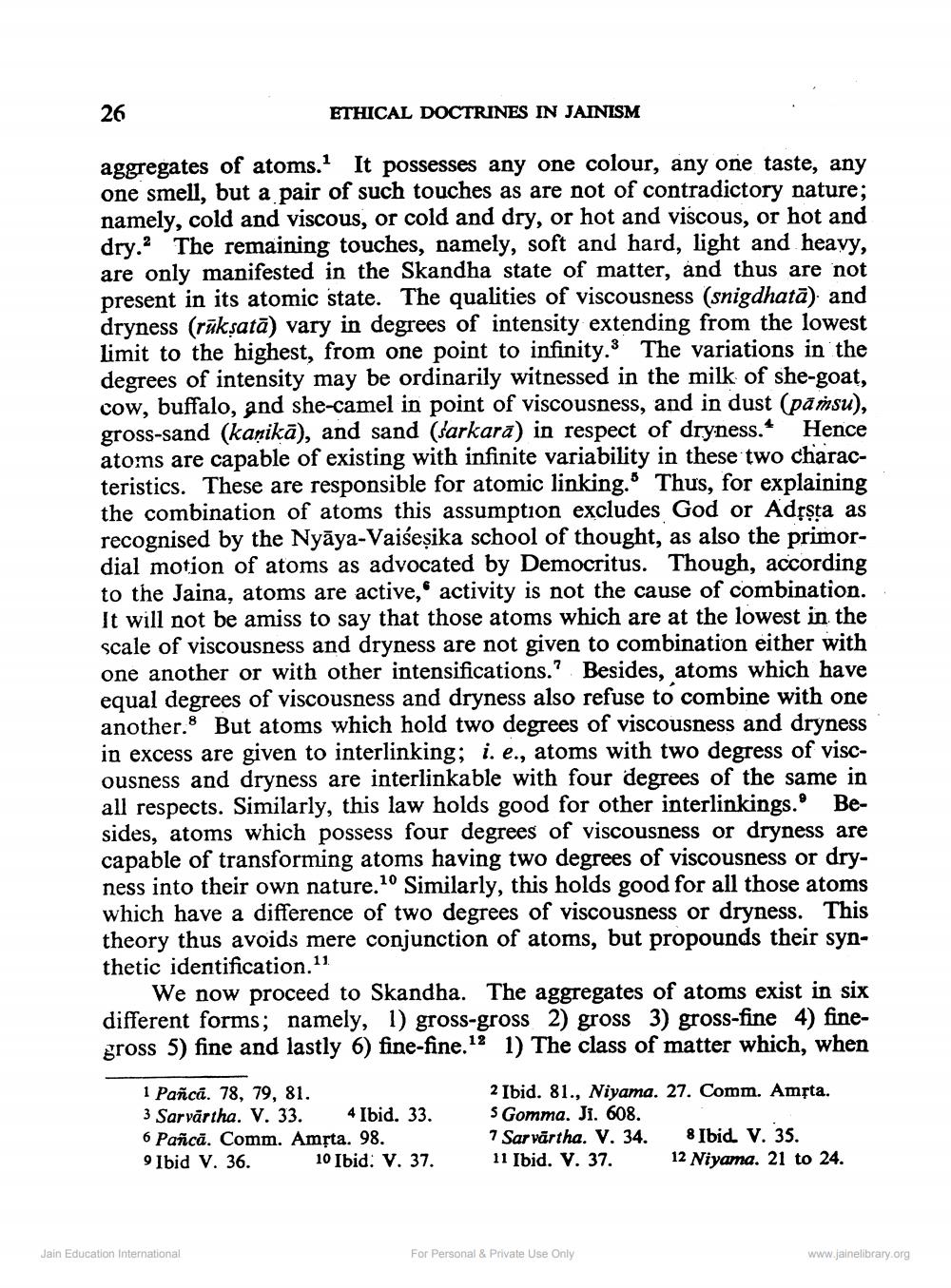________________
26
ETHICAL DOCTRINES IN JAINISM
aggregates of atoms.1 It possesses any one colour, any one taste, any one smell, but a pair of such touches as are not of contradictory nature; namely, cold and viscous, or cold and dry, or hot and viscous, or hot and dry. The remaining touches, namely, soft and hard, light and heavy, are only manifested in the Skandha state of matter, and thus are not present in its atomic state. The qualities of viscousness (snigdhata) and dryness (rūkṣatā) vary in degrees of intensity extending from the lowest limit to the highest, from one point to infinity. The variations in the degrees of intensity may be ordinarily witnessed in the milk of she-goat, cow, buffalo, and she-camel in point of viscousness, and in dust (pamsu), gross-sand (kanikā), and sand (sarkara) in respect of dryness.* Hence atoms are capable of existing with infinite variability in these two characteristics. These are responsible for atomic linking. Thus, for explaining the combination of atoms this assumption excludes God or Adṛṣṭa as recognised by the Nyaya-Vaiseṣika school of thought, as also the primordial motion of atoms as advocated by Democritus. Though, according to the Jaina, atoms are active, activity is not the cause of combination. It will not be amiss to say that those atoms which are at the lowest in the scale of viscousness and dryness are not given to combination either with one another or with other intensifications." Besides, atoms which have equal degrees of viscousness and dryness also refuse to combine with one another. But atoms which hold two degrees of viscousness and dryness in excess are given to interlinking; i. e., atoms with two degress of viscousness and dryness are interlinkable with four degrees of the same in all respects. Similarly, this law holds good for other interlinkings." Besides, atoms which possess four degrees of viscousness or dryness are capable of transforming atoms having two degrees of viscousness or dryness into their own nature. 10 Similarly, this holds good for all those atoms which have a difference of two degrees of viscousness or dryness. This theory thus avoids mere conjunction of atoms, but propounds their synthetic identification.11
We now proceed to Skandha. The aggregates of atoms exist in six different forms; namely, 1) gross-gross 2) gross 3) gross-fine 4) finegross 5) fine and lastly 6) fine-fine. 12 1) The class of matter which, when
1 Pañcă. 78, 79, 81. 3 Sarvārtha. V. 33. 4 Ibid. 33. 6 Pañcă. Comm. Amṛta. 98. 9 Ibid V. 36.
10 Ibid. V. 37.
Jain Education International
2 Ibid. 81., Niyama. 27. Comm. Amṛta.
5 Gomma. Ji. 608.
7 Sarvärtha. V. 34. 11 Ibid. V. 37.
For Personal & Private Use Only
8 Ibid. V. 35. 12 Niyama. 21 to 24.
www.jainelibrary.org




